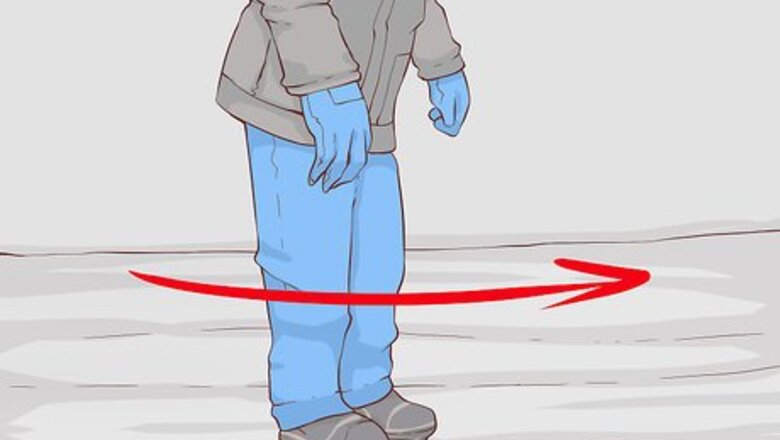
views
Perform the "T" Stop

Try using the "T" stop at first. This is usually touted as the easiest way for pure beginners to learn how to stop on ice skates. Begin by skating slowly forward, on a straightaway, with no obstacles or turns before you.

Drag one skate back. As you glide, turn one skate at a 45 degree angle. Let it hang behind the other skate to create friction.
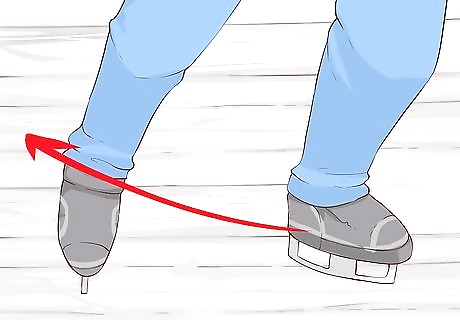
Pull the back skate forward. Bring the dragging skate up into the instep of the leading skate. Make sure to keep your dragging skate in contact with the ice as you do this. You may need to apply some pressure.
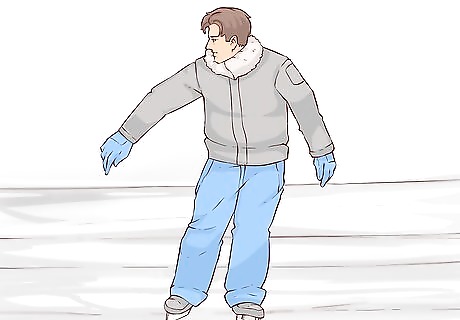
Shift your body weight to the dragging skate. Lean back slightly, and tip your weight into the direction you're coming from. Keep your shoulders straight, pointing forward. Let your arms hang at your sides. Keep your weight on the rear foot, creating friction, until you slowly come to a stop.
Performing the "Snowplow" Stop
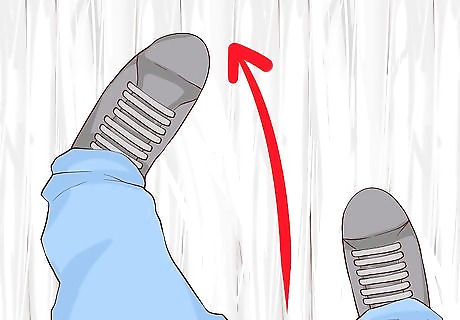
Try pointing your toes to stop. This beginner technique is sometimes called the "snowplow stop" because it relies more upon angle and stability than finesse. It is less graceful than the "hockey stop," but it will slow you down in a pinch.
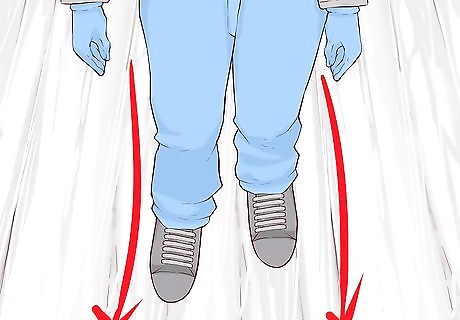
Practice at a slow speed. Skate forward on a straightaway, with no big turns coming up. Let yourself glide at a comfortable pace, and wait to stop until you are already slowing down. As you improve, you can practice stopping at faster and faster speeds. If you feel out of control: don't panic, and don't try to stop right away. Try to find your balance. Wait until you slow down a bit before you try to stop.
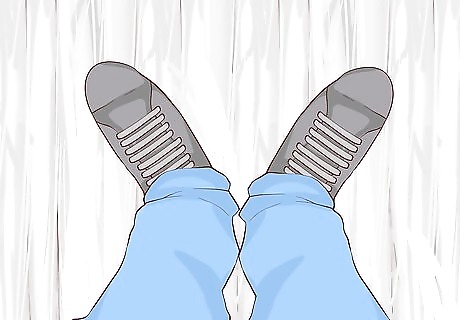
Pigeon-toe your skates. When you are ready to stop, point both of your toe picks inward. Your feet should form an upside-down "V."

Grind to a stop. Hold your feet at a steady angle as you slow down. The friction of the skates against the ice will gradually bring you to stop. Don't push your feet in toward each other, or you risk twisting your ankle.
Performing the Hockey Stop

Work your way up to the hockey stop. As you build confidence and skill, you can learn to stop harder, at greater speeds. This is the technique that ice hockey players and other professional ice skaters use. It becomes necessary, at some point, as you need to stop quickly and efficiently in order to keep up with the competition. If you're a beginner, however, you don't need to worry about mastering this right away.
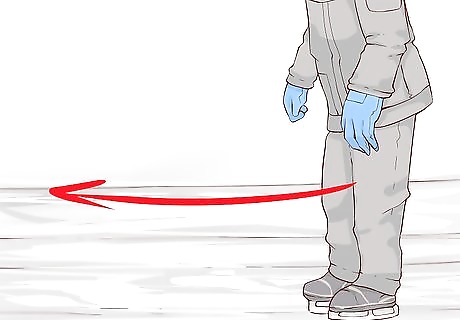
Skate forward at a medium to slow speed. You can be gliding more quickly than you would for the "snowplow stop," but you should still feel as though you are in control. In certain high-performance situations—an intense hockey game, or a complex figure-skating move—you may need to come to a halt or change directions very quickly. In general, avoid trying to suddenly stop while flying across the rink at your top speed.

Bend your knees. As you glide, go into a half-crouch, as though you're going to sit. Make sure to keep your knees shoulder-width apart. This is called un-weighting yourself. Then, turn your skates sideways not-quite-90 degrees from the direction that you were going before.

Shift your weight back. With your knees bent, lean away from the direction you are heading. Focus your weight on the side of your feet that is away from the direction that you are moving.
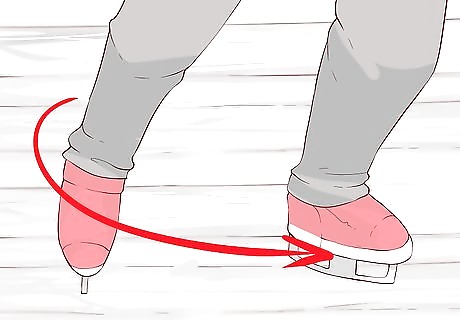
Create friction. Slowly but firmly dig the edge of your skates into the ice. Hold fast, and dig harder as you slow down. Ride the friction until you come to a halt.Only a small portion of the skates should be in contact with the ice, thus minimizing friction and eventually allowing you to stop on a dime.
Practicing
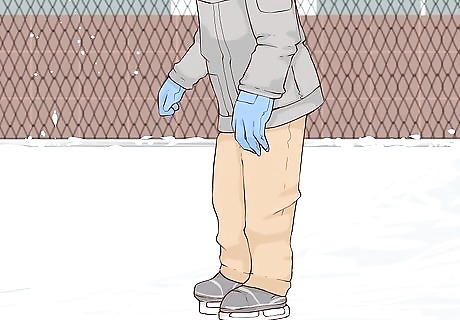
Try stopping on a straightaway. Find a long, open stretch of ice to practice on. Ideally, pick a time when there is not much skate traffic around you, so that you don't need to worry about colliding with other people. Make sure that there are no turns, holes, or other obstacles ahead of you. Put yourself in a space where you only need to focus on the act of stopping.

Consider wearing pads and a helmet. If you are going to be stopping suddenly at high speeds, then safety is of the essence. This is especially the case if you are stopping in the midst of a high-intensity activity like a race or a hockey game. You can use hockey pads or non-ice skating pads – anything that will protect you from the ice! If nothing else, make sure to protect your head, your hands, your elbows, and your knees.

Watch videos. Look online for videos of other people stopping on ice skates. Watch hockey games, speed-skating races, or figure-skating competitions on television to get a feel for the motion. There may be other tricks and styles of stopping that pertain to specific types of ice skating.




















Comments
0 comment